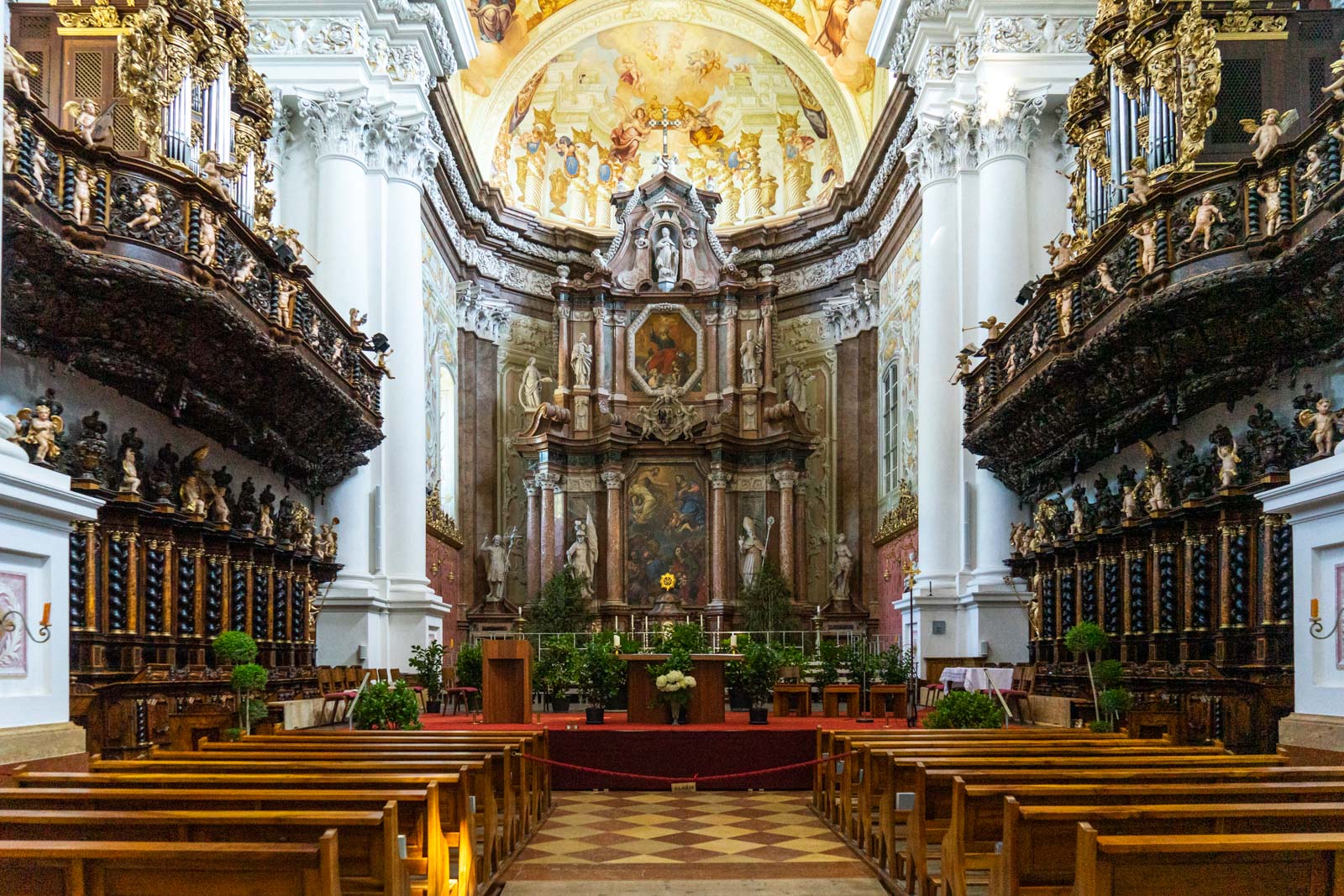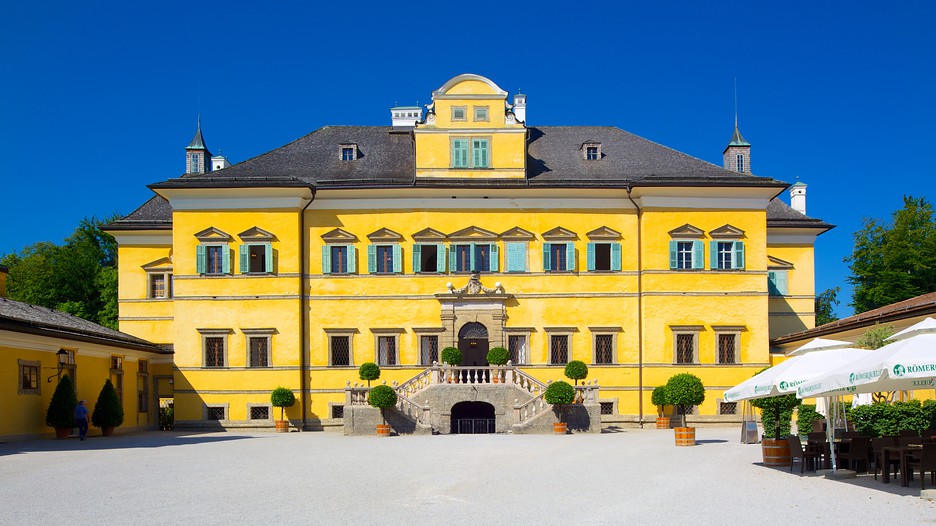St Florian Monastery - St Florian
If you ever find yourself in Austria, you will not regret visiting St Florian Monastery. It might be a better alternative to the famous Melk Abbey and here’s why.
Located in Upper Austria, the Baroque St Florian Monastery is certainly less well-known than the Melk Abbey but just as impressive. Fondly referred to as the “Austrian Escorial” due to its striking similarity to the Spanish royal palace, its grandiosity is nothing short of awe-inspiring.
St Florian Monastery was founded in 1071 by Margrave of Austria Leopold II, in honour of his soldiers who were killed in battle against the Magyars. The present-day buildings date back to the 18th century, after a fire destroyed much of the original structures.
The majority of the monastery was designed by Carlo Antonio Carlone, an Italian architect who was renowned in his field. He created a beautiful fusion of Italian Baroque and Austrian Gothic Revival architecture, which is evident in the structure’s central building, the St Florian Basilica.
The breathtaking basilica is the beating heart of the monastery, and its 7,000-pipe organ is regarded as one of the largest and most notable in Austria. Attention to detail is evident throughout the edifice, with ornate frescoes, intricate stucco work, and stunning sculptures adorning every nook and cranny.

The monastery houses an extensive collection of music, with over 3,000 manuscripts of works ranging from the 9th century to the present day. Its rich tradition of choral music is continued to this day in the form of the St Florian Boys’ Choir, which has been performing for over 1,000 years. The choir is highly acclaimed and has performed around the world for royalty, popes, and other significant personalities.
The library of St Florian Monastery is equally impressive, with over 150,000 items. Among the collections are texts on music and theology, fine arts, scientific works, and maps. The pride of the collection is a copy of the Gutenberg Bible, one of just five complete examples in Austria. Other highlights include the Vienna Dioscurides manuscript, with illustrated herbals from the 6th century.
St Florian Monastery is not just a place for music lovers and bookworms – history buffs will no doubt find it fascinating too. During the Napoleonic Wars, the monastery was used as a hospital for wounded soldiers. It was also a crucial part of the Austrian resistance against the Nazis during World War II. The Basilica suffered damage during the Austrian Revolution of 1848, and the Austria-Hungarian Empire’s retreat from Italy during the same period saw the fleeing troops ransack the St Florian’s library.
St Florian Monastery might not be as heavily promoted as other tourist destinations in Austria, but those who visit it will discover treasures they can’t find elsewhere. The harmony of art and history found in this beautiful Baroque masterpiece makes it deserving of a place on your travel itinerary.
History and Address
St Florian Monastery was founded in 1071 by Margrave of Austria Leopold II, in honour of his soldiers who were killed in battle against the Magyars. The present-day buildings date back to the 18th century, after a fire destroyed much of the original structures. The majority of the monastery was designed by Italian architect Carlo Antonio Carlone. It is located in St Florian, Upper Austria.
FAQ
When is the best time to visit St Florian Monastery?
While the monastery is open to visitors year-round, it might be best to visit during the summer months of May to September. It’s also worth checking the St Florian Monastery website to find out about any special events that may be happening during your visit.
How much does it cost to visit St Florian Monastery?
Admission to the monastery is free of charge, but donations are welcome. If you’d like to take a guided tour, it costs €6, with discounts available for students and groups.
What language is the guided tour of the monastery in?
Guided tours are available in German, English, French, and Italian. Audio guides are also available, which can be helpful for those who want to explore the monastery at their own pace.
How do I get to St Florian Monastery?
If you have a car, St Florian Monastery is around a 15-minute drive from Linz. Public transport is also available, with buses departing from Linz Hauptbahnhof every 30 minutes. The journey takes around 20 minutes.
Is there anywhere to eat or drink at St Florian Monastery?
Yes, the monastery has a restaurant serving traditional Austrian dishes, as well as a café where you can enjoy coffee and cake. There’s also a small shop selling souvenirs.
Is St Florian Monastery suitable for children?
While the monastery is fascinating for music, art, and history enthusiasts, it might not be as interesting for young children. However, the breathtaking architecture and serene surroundings might make for a pleasant family outing.
Can I take photographs inside the monastery?
Photography is allowed in most parts of the monastery, but flash photography is prohibited. There are also some areas, such as the library and the archives, where photographs are not allowed due to conservation reasons.




Post a Comment for "St Florian Monastery - St Florian"